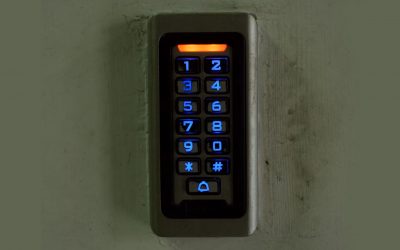When most people think of a house alarm system, it’s intruders of the physical, human, nasty sort that they want to keep out! However, one of the largely unsung benefits of house alarm systems is their versatility. Many house alarm systems can be rigged to alert the security company (or other public service department) of fire, smoke, or medical emergency. An even more insidious intruder to guard against, though, is invisible … odourless, and silent. Carbon monoxide leaks can be devastating to your family’s health, and luckily there are carbon monoxide house alarm systems to help you avoid them. Here are the top ten things Pacific Security Technology think that you should know about carbon monoxide detectors.
1. Not everybody needs a carbon monoxide house alarm system. If you don’t use gas appliances in your home and don’t have a garage adjoining the house, the levels of carbon monoxide in your home should be zero. We always advocate being safe over being sorry – but by the same token, if there is nothing to guard against, the money spent on a CO detector will be wasted.
2. Carbon monoxide comes from gas appliances like:
– Indoor furnaces
– Gas powered space heaters
– Gas ovens and stove tops
– Gas powered hot water systems
– Some clothes dryers
Electric appliances do not create carbon monoxide as a by-product.
3. However, if you do have gas appliances in your home, you could already be suffering from low-level carbon monoxide poisoning. It produces symptoms similar to a cold or flu; people suffering from it are easily tired, have mild headaches, and sometimes feel inexplicably nauseous.
4. Carbon monoxide is toxic to the body because it binds to the oxygen sites on your red blood cells, meaning that your tissues can’t receive their normal amount of oxygen. You can imagine what this would do to your body, especially to sensitive brain tissues.
5. Many carbon monoxide house alarm systems perform self-diagnostics, and have a standard sensor lifetime of around 6 years.
6. Your CO detector can be linked to your standard house alarm system, so that if CO is detected and the alarm is not shut off within a specified period of time, the fire department or security company will attend the scene.
7. CO detectors should be placed between 5 feet above ground level, up to ceiling level. CO is slightly lighter than air.
8. Many carbon monoxide house alarm systems have a multi-stage warning system, so you’ll know if non-critical levels of carbon monoxide are detected, and be able to head off a problem with your appliance before it occurs.
9. Just like regular house alarm systems, you may be eligible for a discount on your home and contents insurance if you have a CO detector installed. They are considered an environmental sensor.
10. If you have babies, young children, immuno-compromised or elderly people in the house, you may want to consider getting more than one CO house alarm system. These groups are more sensitive to the effects of carbon monoxide – CO detectors are usually designed to protect healthy adults.
For more information on how we can help you create a safer environment at home, call 1300 660 445 for a free consultation.

